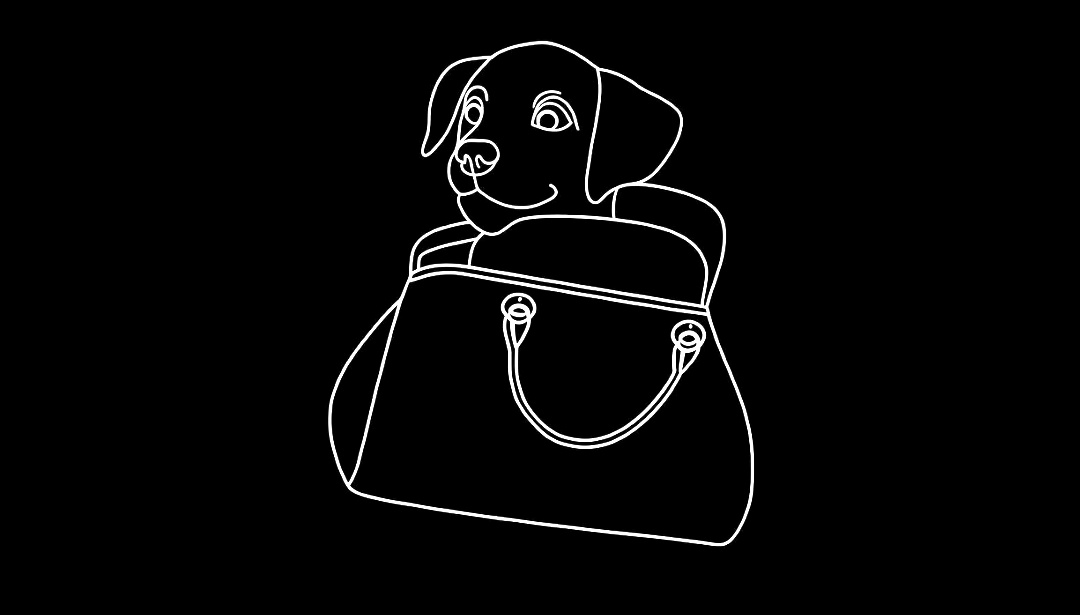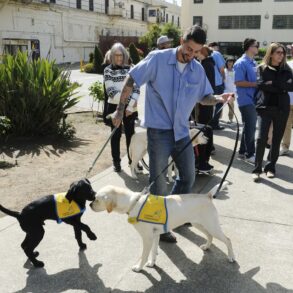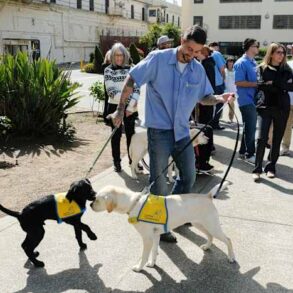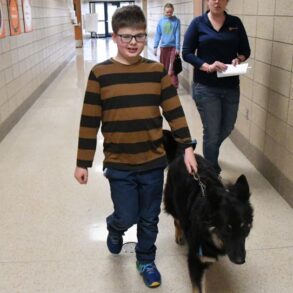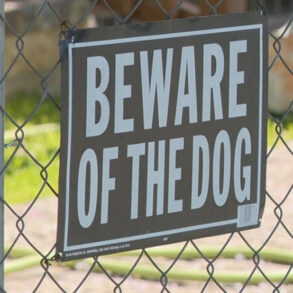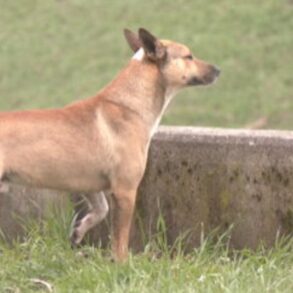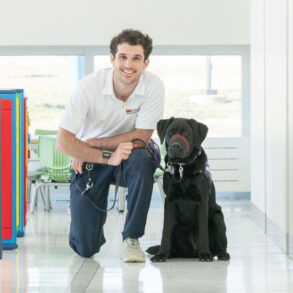Dogs spend much time smelling everything they encounter while walking because their noses are extremely sensitive and their brains have tremendous power to interpret what they inhale.
With more than 100 million sensory receptor sites in the nasal cavity compared to only six million in people, the area of the canine brain devoted to analyzing odors is about 40 times larger than the comparable part of the human brain. In bloodhounds and some other dog breeds, their receptors range to nearly 300 million.
Now, researchers at Bar-Ilan University (BIU) in Ramat Gan have revealed amazing insights into dogs’ olfactory systems that are likely to pave the way for new applications in law enforcement, drug detection, medical diagnostics, and search-and-rescue operations.
They developed an optical sensor capable of remote sensing dogs’ brain activity in three key regions – the olfactory bulb, hippocampus, and amygdala – that play a critical role in how dogs differentiate among different smells.
In the study, scientists employed a cutting-edge detection structure system using laser technology and a high-resolution camera to capture brain activity in real time from four dog breeds.
These dogs were exposed to four distinct scent stimuli – garlic, alcohol, menthol, and marijuana. The data were then analyzed using a machine-learning algorithm, revealing that the amygdala plays a significant role in scent differentiation, highlighting the emotional and memory-related aspects of odor processing.
It has just been published in the Journal of Biophotonics under the title “Sensing Dog Brain Reactions to Smell by AI Speckle Pattern Analysis.”
“We showed that the amygdala is crucial in the way dogs process and react to odors, with specific scents triggering distinct emotional and memory responses, and we are capable of optically detecting their brain activity in this region, said Prof. Zeev Zalevsky, from BIU’s Kofkin Faculty of Engineering.
“This discovery could be the first step toward creating a device that enables us to better understand and interpret the unique way all dogs perceive and differentiate smells.”
Training by dog handlers to detect explosives, dangerous drugs, or diseases like cancer and diabetes in their owners can take many months and even years, and only a few dog breeds are suitable, Zalevsky told The Jerusalem Post.
“But with my laser sensor, any dog breed can be utilized, because all dogs – who developed their sensitive olfactory abilities millions of years ago – have sensitive noses whose messages reach their brains. This real-time sensing would bypass the need to train dogs to utilize their scent abilities,” he said.
Another advantage is that neither the dog nor the handler – including soldiers searching for explosives, have to be near them; the dog – and his handler – can be 100 meters or more at a distance, wearing a special helmet, and both will be safe,” said Zalevsky, who adopted a mixed breed himself and has been working on the sensors for a decade and with dogs for a year.
“There are regions in the brain that, when active, use oxygen that is contained in the blood in the brain, and the dog’s brain pulsates. The profile differs according to what the dog smells.”
Innovative method of brain activity analysis
The study introduces an innovative method of brain activity analysis through laser-based speckle pattern detection, a remote, non-invasive technique that has never been applied to canine brain activity.
Unlike traditional methods such as fMRI (functional magnetic resonance imaging) or EEG (electroencephalogram), this approach allows researchers to observe brain responses without requiring the dog to be sedated or confined to bulky equipment. This opens up new possibilities for studying dogs in real-world environments, making the technique both affordable and accessible for further research.
“Our next step is to develop a portable, Wi-Fi-controlled device equipped with a mini-camera and laser system, which could be mounted on a dog’s head and used to monitor its olfactory responses in real time,” added Dr. Yafim Beiderman from Zalevsky’s Optical Research Lab.
“This could significantly enhance the way dogs are used in scent detection, from detecting illegal substances to diagnosing diseases in humans, all while deepening our understanding of how they perceive the world around them.
This post was originally published on this site be sure to check out more of their content.
